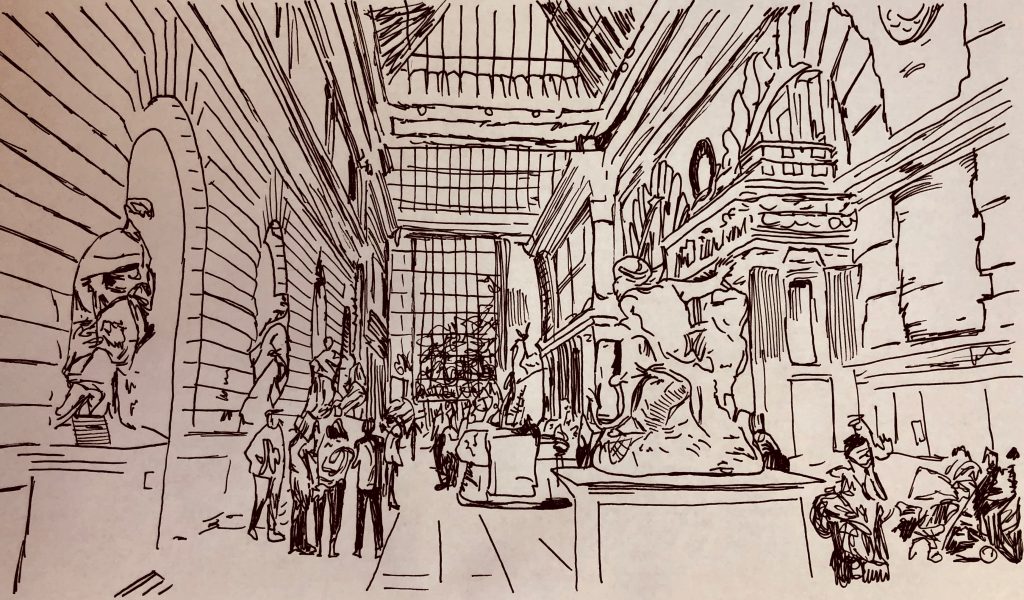In a society where you can shop clothes in the comfort of your own home, have groceries delivered to your house, and interact with your friends through a VR headset, it seems like we don’t need to go far, if anywhere, to feel at ease. Now, there’s nothing wrong with not leaving the house but everyone needs interaction at some point whether that’s with another person, animal, or inanimate object. Sure, you can spend the day lazily scrolling through thousands of web pages looking at the new Andy Warhol exhibit in your bed, but experiencing something like art first hand is worth changing out of your PJs and stepping outside.
Museums are like real life encyclopedias. Any info from the Crimean ages to the early 2000s―these buildings have it all. Students can absorb information from visiting exhibits that a history textbook will never be able to teach. For instance, George Chan’s ‘Artist Floor’ canvas may simply appear like splattered paint on a white surface, but the story goes much deeper than that. During the time George Chan made this piece, circa the 1980s, China was oppressed by its government. There was massive censorship throughout the country so no one was able to speak out against the government as innocent civilians would have been killed or severely penalized. In order to make a living, Chan had to use abstract techniques to conceal his emotions.
I’ll admit that I am among the crowd who thinks that history is a pointless subject especially when there are more pressing matters in the present or future that demands our attention. However, going to a museum and seeing an exhibit such as George Chan’s can change that perspective. As soon as more people start observing history for themselves, people will start to care more. It’s almost like putting a name to a face except it’s with artworks to artists and dinosaur bones to paleontologists.
Taking a museum trip not only teaches us about history, but it also allows us have a deeper appreciation for art. Art is the closest thing to raw human emotion. Underneath each piece lies a great story. The Met has over two million works, and Christie’s Gallery holds about just as much, coupled with auctions. Each piece reflects a certain mood or voices some sort of opinion, which is why artists are commonly activists. One of the most famous activist-artist is Shepard Faire, whose art you might recognize if you pay attention to Manhattan streets. One of his portraits called ‘Visual Disobedience’ is of a Cantonese woman holding a musket with a rose in the butt of the gun. This work was inspired by Faire’s trip to Hong Kong as he spoke out against the abuse of power and authority. Faire is not the only one who uses his art to voice his opinion as it can be said that almost every single artwork is inspired by an artist’s stance on some topic.
One of the most prevalent topics of discussion behind the latest technological advances is human connection. Social networking apps such as Facebook, Instagram, and Twitter all emphasize the importance of ‘people bonding.’ This same idea applies to museums. Many museums are tourist-friendly. Each admission ticket is usually less than $15 with complementary translation sets. This creates an accommodating atmosphere that connects locals with tourist and audiences with art. All in all, museums can serve as an escape from the divisions of the outside world and instead become a place where everyone can come together and enjoy history. Museums encourage human connection, and that is something that will never retire.
Amelia Chen
graphic chief
Graphic: Evie Cullen

